
This post contains affiliate links. For more information, please see my Disclosure Policy.*
Noom has been all over the tv ads lately. And with the pandemic practically eliminating gym workouts, maybe you’re wondering if it’s for you. So here’s a Noom review with what to expect in the first 30 days.
What is Noom?
Noom is an app-based lifestyle program designed to help people lose weight by tapping into their relationship with food and dieting.
They say they’ll “retrain your brain:”
Noom creates long-term results through habit and behavior change, not restrictive dieting
From Noom.com
To start, you create a profile with your height, weight, ideal weight, gender (it’s a binary choice), answer some lifestyle questions as they relate to your age, then you enter your email to get your results.
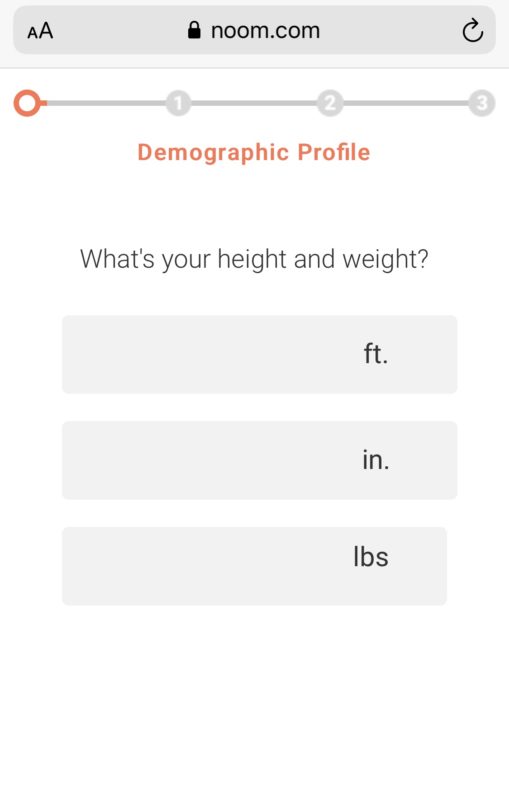
Here’s where you start your free trial. It lasts for 2 weeks.
Since this is an app-based system, you’ll get an email that gives you a bulleted list of what to expect, some FAQs, and a guide to getting started with an app on your phone. If you open the email on your desktop computer, you’ll be directed to used your mobile device.
Other than the FAQs, there isn’t much else on the Noom site. You must use your phone (or mobile device).
Takeaway #1: Noom is used via mobile app only.
In the first few days, you’ll have the option to add on tailored meal plans and exercise routines if you choose.
When I joined, the meal plan was $49 and the exercise plan was $29, but both together were still only $49. They come as separate PDFs.
You’ll connect a pedometer or fitness device like FitBit so you can track your daily steps. You’ll slowly work up to 10,000 a day if you aren’t already there.
Finally, you’re also assigned an On-Demand Coach that you can talk to inside the app. From what I understand, each coach has upwards of 300 clients, so they don’t respond immediately. In practice, I’ve usually waited about 1-2 days to get a response.
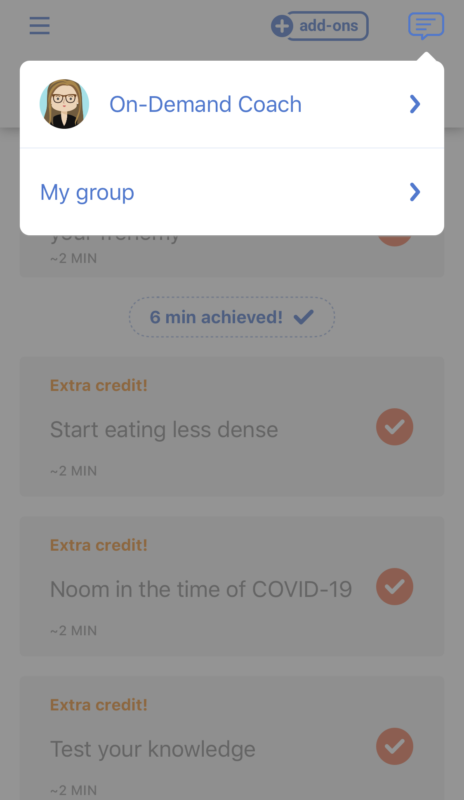
Week 1 of Noom
Week 1 of Noom starts as soon as you download and log into the app.
Here you’ll be introduced to the program. Everyone starts on a timeline based on losing 1 pound a week. You can change the speed at which you want to lose weight, but you will not go below 1200 calories per day (for women, the minimum is 1400 for men).
Each day begins with short articles filled with #PsychTricks. You get to decide how much time you actually want to spend doing this every day, and each article is timed.
The articles are bite-sized nuggets of information that start breaking through our established thinking about what’s food is “bad” and what’s “wrong” with our bodies. They’re written by people who “have backgrounds in medicine, nutrition, exercise science, and psychology…[and are] based on the most up-to-date scientific data to provide you with the most accurate information.”
Each article also has a reading speed so you know how long it will take to get through. They’re about 2-4 minutes long each.
You’ll start with “designing your big picture (YBP)” which is your end goal. Then you’ll learn why you have to start weighing yourself every single day.
You’ll also be introduced to the concept of caloric density (CD) and the red-yellow-green color categories of food. Unlike macro counting, this approach focuses on eating things that are either high in water and/or low in caloric density.
The color chart encourages eating low CD foods over high CD foods. In Noom, there’s no such thing as a “bad” food, even if it is in the red category. You’ll learn that yellow and red foods are just about managing portion sizes.
You’ll also start taking quizzes that show how much of each day’s articles you’ve absorbed. There’s a lot of silly hashtaging (#NoomNerdsLoveHashtags is an actual hashtag…).
But the information is repeated a lot. You’re also encouraged to save the daily articles in your library. This way you can refer back to them whenever you want. They’re saved in reverse chronological order
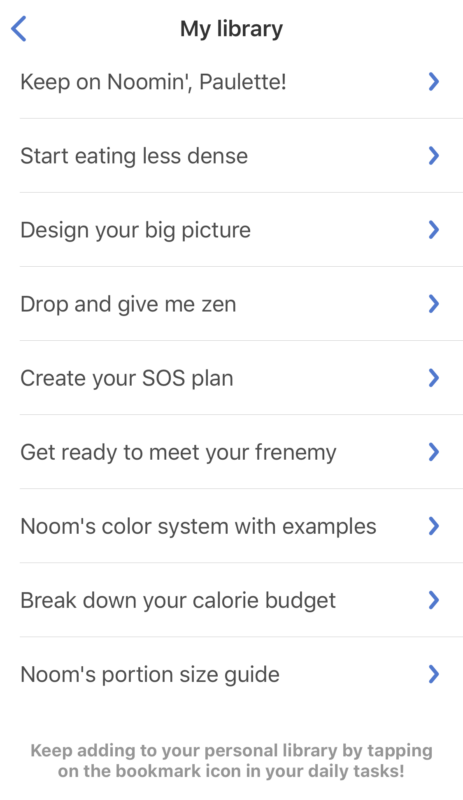
You’ll learn about thought distortions, conquering cravings, setting up SMART goals, learn about the Noom portion size guide, how to use psychology to shop smarter, and approach each day with a calorie budget. You can eat what you want, but if you eat more green foods, your budget will stretch longer!
Takeaway #2: there are no more “bad” foods.
Also if you exercise, you get half of your calories back. Of course, you self-report the type of exercise and the intensity, so it’s easy to overestimate. Be careful with that!
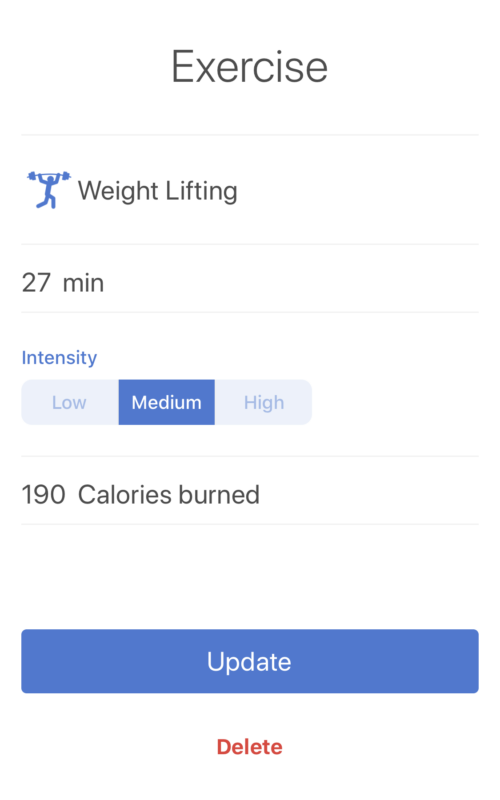
Week 2 of Noom
Noom kicks off week 2 with a recommitment to YBP (your big picture). You also learn what rider vs elephant is. This is about discipline and self-control vs impulse and irrationality.

And you get to treat yourself!
Because rewards reinforce behaviors, and behaviors build habits, Noom encourages periodic rewards to maintain these habits. It’s not a cheat meal. You want rewards that aren’t food-based.
Again, in Noom there’s no such thing as “bad” food. You have the freedom to eat anything you want every day within your calorie budget. So if food is off the table, consider something else. Driving gloves, a new lipstick, a Netflix binge session, a bubble bath.
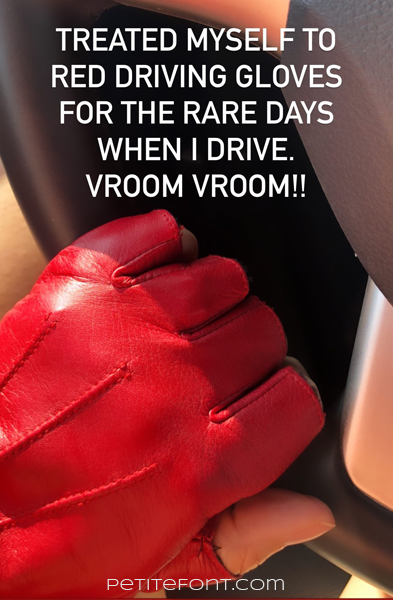
This week you’ll also get tips for figuring out how to decipher a restaurant menu to find the healthiest and still tasty options.
This is also when your trial period ends. You can quit anytime during the trial and still enjoy the app for however much longer the trial would have lasted. Just tell the coach inside the app and they’ll walk you through the process.
If you want to continue, Noom will bill for the rest of your program time (this depends on how much weight you want to lose and in what amount of time). For me, this was originally 7 months. I was billed a total of $25 per month for 7 months.
This was in addition to what I paid for the meal plan and exercise add-ons.
Takeaway #3: Noom costs about $25 per month. Meal planning and tailored exercises are extra.
Leaving at the end of your trial doesn’t mean you have to stop using the app. But you won’t have access to your library after the end of this week.
Think you’re ready to join Noom? If not, continue onto Week 3.
Week 3 of Noom
This week is when you meet your group and are assigned a Group Coach. The Group Coach is different from your On-Demand Coach.
Your group will have about 20 people from around the country. I think mine might have some UK folks in it too. From now on, every few days your daily readings will encourage you to share with your group. This can be about SMART goals, boundaries, or any little thing. You should also be able to rely on them for support because you’re all in this together.
The Group Coach will also start group chats to discuss the readings. Like Facebook or Instagram, you can “like” your group members’ posts (but you can’t unlike them). You can post too, but be careful not to fat finger anything. You can’t edit posts after they’re published.
If the group system isn’t for you, that’s okay too. You can request a different group, though I don’t know how long it takes to be placed in one. If you do opt not to participate in the group, you’ll be removed after 2 weeks. You can always request to be added back though.
This is the week that the Noom articles focus on the 7 Keystone Habits and Mastering Mindful Eating (and you’ll learn that #NoomNerdsLoveAlliteration).
This will cover topics such as the impact of breakfast, how hearing yourself chew will help you eat less, how actually taking time to see and appreciate your food can also help you lose weight, and you’ll become familiar with the Noom Satiety Scale.
The Satiety Scale will probably be a point of discussion in your group.
Week 4 of Noom
In Week 4 the focus is on old “eating scripts.” Like, finishing everything on your plate because that’s what you were taught as a kid. Now you’re going to embark on the #BreakTheScriptChallenge.
You’ll start writing your own script by identifying “danger zones,” what to do if you like ending meals on a “sweet note,” and learning about different eating styles.
The psychology factor of Noom really begins to add up by the end of this week. At this point you’ve likely weighed yourself 30 times and begun to see a noticeable trend line through your daily check-ins.
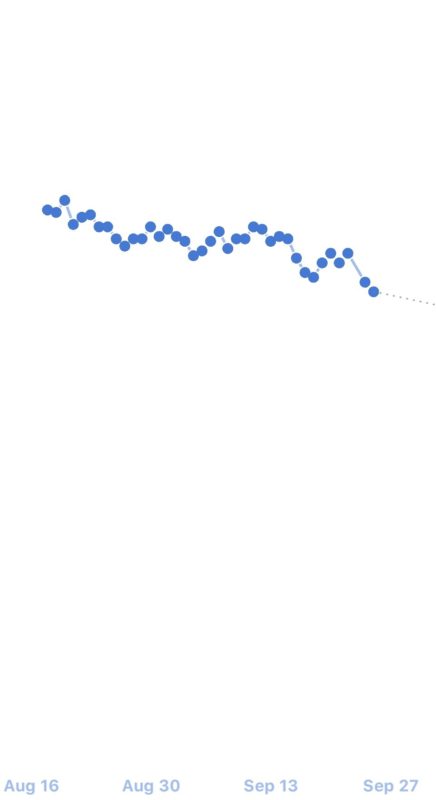
You’ve learned about how triggers create thoughts which lead to actions and end up in consequences. You’ve realized how your environment, from how big your plate is and who you’re with, impacts how much you eat.
It’s pretty heady stuff.
And all this time you’ve been tracking your food intake as honestly as possible. You’ve tackled your desire for more red foods by loading up on green foods.
And you’ve probably lost weight. Woo!
The End of 30 Days of Noom
Your first 30 days will end by Week 5. If you’ve stayed on track then you’ve seen your daily weigh-ins create a downward trend line, even if there are some spikes in between.
Hopefully you haven’t reached a plateau but even if you have, you know what to do.
If your motivation is beginning to slip because the honeymoon is over, you have a back up plan for staying on track.
So is Noom the perfect program?
No.
Noom has pitched itself as the anti-Weight Watchers. It’s positioned as the program for people who hate programs, or who have failed at others. But it isn’t without its own challenges.
Pros and Cons of Noom
In my next post, I’ll do a deeper dive on what I do and don’t like about Noom. For now, here’s a brief overview.
Like everything, there are good things to Noom and some not so good things. The good things include:
- The daily Noom articles are packed with really solid information.
- Encouraging a group dynamic helps with accountability and feeling like you’re not alone on this weight loss journey.
- A visual representation of weight loss is super motivating.
But then there are the not-so-good things:
- If you’re used to tracking macros, this new method can be maddening and takes some getting used to.
- The food database is not always accurate.
- The user interface in the app is clunky and unsophisticated.
You have to decide if it’s right for you. As a reminder, here are some takeaways:
- Noom is used via mobile app only.
- There are no more “bad” foods.
- Noom costs about $25 per month. Meal planning and tailored exercises are extra.
Still on the fence? Here’s my last takeaway.
I would recommend it if you’re like me: unable to progress in your regular workouts and looking to improve your relationship with food. If you’ve read up to this point, you’ll go into it a hell of a lot better informed than I was when I signed up.
Plus, it’s free for 2 weeks! So if you think you’re ready to join Noom, get started here.
Save this for later by pinning one of these images:









I subscribe to your blog for the sewing content– but having seen Noom all over the place, I thought this was an interesting look at the process. Thanks for sharing! Good luck on reaching your goals!
Glad you’re finding value in the non-sewing content Caroline!
Thanks for sharing your experience with Noom. I’ve been interested in Noom for a while but didn’t really understand how it worked. I am an emotional eater and this seems like working on “head” hunger and redirecting impulse eating. Really helpful for me.
This helped me discover that I’m an emotional eater too! I hope if you decide to join Noom, it works for you too.
Good post. Really detailed and informative.